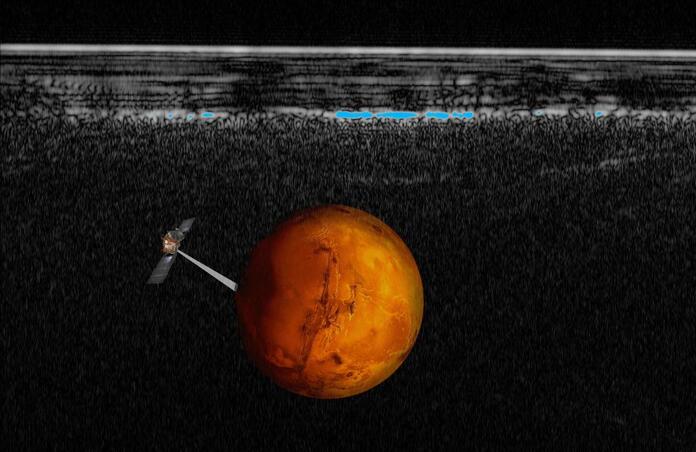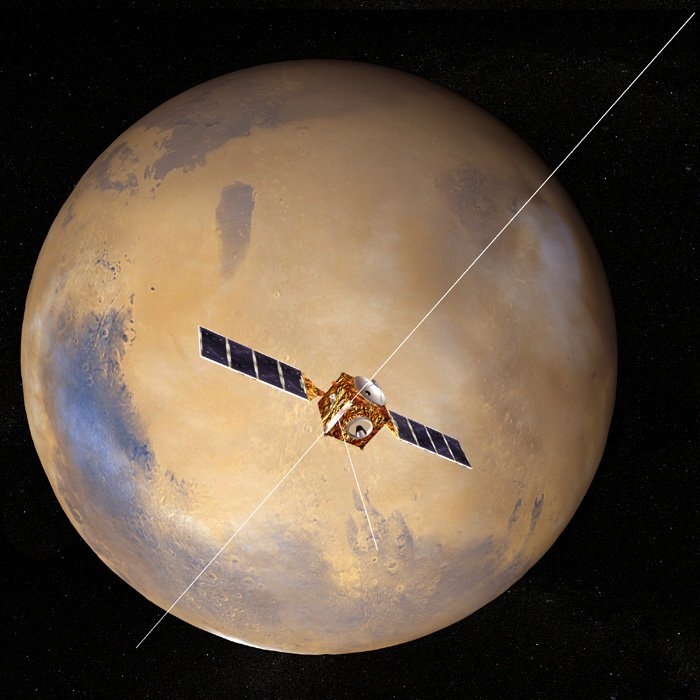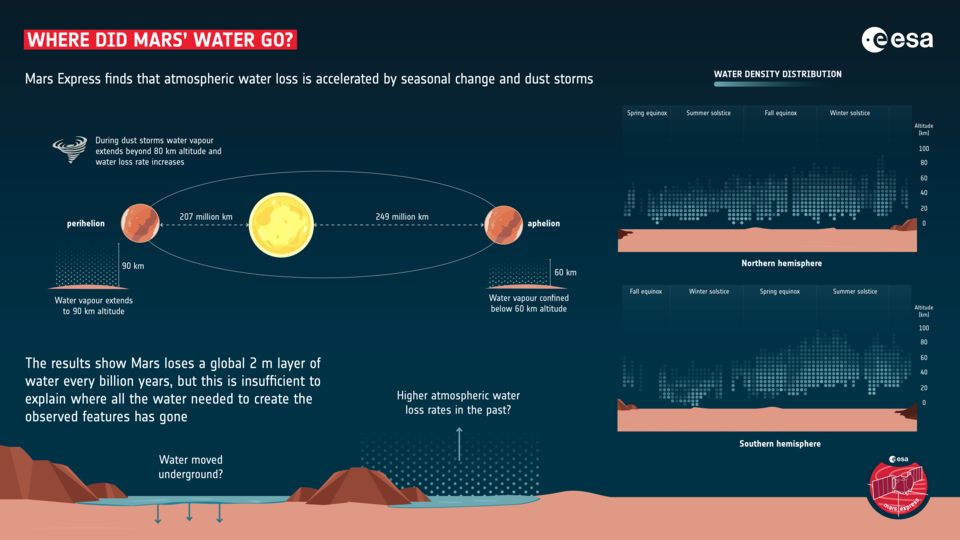Mars may be hiding more water below its surface

New results from ESA mission Mars Express hint at the presence of numerous lakes below the Martian surface.
In 2018, news came that Mars may host a sub-surface lake near its South Pole region. This conclusion was drawn from data collected with the instrument Mars Advanced Radar for Subsurface and Ionospheric Sounding (MARSIS), on board the European Space Agency’s (ESA) first planetary mission Mars Express. It launched in 2003 and should continue its operations until at least next year; the mission also included lander Beagle 2, which was intended to be an astrobiology mission looking for life on and up to 1.5m below the Martian surface – unfortunately the lander’s solar panels failed to deploy, so that ESA could never “communicate” with it. Anyway, the orbiter has been successfully doing its measurements. What MARSIS, specifically, does, is to send radio waves thanks to the orbiter’s 40m long antenna. These get partially reflected by the surface, however another fraction of the waves penetrates through the crust and reflects off sub-surface boundaries between two materials.

Back then, the team that analysed the data found evidence for the presence of a 12 mile (19 km) wide lake, located about 1 mile (1.6 km) below the surface. Subsequently, they studied a wider area around the South Pole and found three more underground lakes – on average 6 miles (10 km) wide. Now, a team composed of a doctoral student and his supervisor at NASA's Jet Propulsion Laboratory (JPL, which helped build MARSIS) have analysed MARSIS data from the past 15 years of Mars Express’ mission, an astounding 44 000 observations. Their results imply that there are dozens of additional, smaller underground ponds, however those would be found rather close to the surface. This is very unexpected, as these places should still be too cold for water to exist in a liquid form.
On the cover image, you can see an artist's illustration of Mars Express in orbit with the spacecraft's radar data - the blue patch is a signal that allowed the teams to establish the presence of subsurface liquid water. These MARSIS reflections can’t fully be explained yet – maybe what caused the reflection is another substance, maybe the water is extremely salty, so that it doesn’t freeze as easily, or maybe the areas beneath the South Pole are heated thanks to volcanic activity, although the latter explanation is mostly ruled out by other research.
This mystery falls into the broader quest for Mars’ “lost water”: the best theory about how Mars got all of its features like valleys and canyons is that until about 3.8 billion years ago, the Martian environment would have been rather similar to the Earth’s, with liquid water at the surface. However, after having been stripped of most of its atmosphere, hence undergoing climate change, the planet became the dry, red landscape we imagine today. The estimated amounts for the initial water cannot be accounted for just by Mars’ ice caps, hence the search for underground water. Moreover, water can escape by leaking through the atmosphere, a phenomenon that the Mars Express orbiter also studied – in March this year, a paper by ESA detailed the effects of seasonal weather changes as well as dust storms on this atmospheric water loss.

The reason why astronomers care about this water is, again, astrobiology – sub-surface lakes also exist on Earth, for instance Lake Vostok in Antarctica. They are isolated environments where life has evolved quite independently from what’s going on with the rest of the planet. If there once was life on Mars, Martians could still be hiding in one of those sub-surface ponds…
Cover Image: Mars Express and Data, ESA, INAF. Graphic rendering by Davide Coero Borga, Media INAF
Image Credits:
1 - MARSIS antennas, ESA
2 - MARSIS reflections, ESA/NASA/JPL-Caltech
3 - South Pole ice cap, ESA/DLR/FU Berlin/Bill Dunford
4 - ESA poster, ESA/A. Fedorova et al
